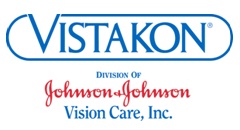 While Americans rank sight as the most important of the five senses, a new survey shows that nearly half did not get an eye exam in the past year and approximately 30 percent do not believe that taking care of their eyes is as important as other health issues. The 2012 Americans’ Attitudes and Perceptions About Vision Care Survey, conducted online by Harris Interactive on behalf of VISTAKON Division Johnson & Johnson Vision Care, Inc., tracked attitude and behavior changes among 1,000 US adults compared to 2006 benchmark data and revealed surprising discrepancies between attitudes about vision care and actual practices.
While Americans rank sight as the most important of the five senses, a new survey shows that nearly half did not get an eye exam in the past year and approximately 30 percent do not believe that taking care of their eyes is as important as other health issues. The 2012 Americans’ Attitudes and Perceptions About Vision Care Survey, conducted online by Harris Interactive on behalf of VISTAKON Division Johnson & Johnson Vision Care, Inc., tracked attitude and behavior changes among 1,000 US adults compared to 2006 benchmark data and revealed surprising discrepancies between attitudes about vision care and actual practices.
Results show a consistently high value placed on maintaining proper vision, although the number of respondents who indicated they do not regularly visit an eyecare professional increased 36 percent compared to 2006 (19 percent vs. 14 percent in 2006). Alarmingly, approximately one in five (21 percent) US adults mistakenly agrees that they do not need an eye exam unless they are having trouble seeing.
“Despite knowledge and perceived importance, Americans are not making eye health a medical priority,” says Cristina Schnider, OD, senior director, Professional Communications, VISTAKON “Seeing an eyecare professional regularly for a comprehensive eye exam will not only assess vision and the potential need for updated prescriptions, but it may also help identify and lead to a diagnosis of other health concerns such as hypertension and diabetes.”
Among the respondents who have a regular eyecare professional, the study shows an upward trend in satisfaction rates. Significantly more US adults are extremely/very satisfied with their regular eyecare professional, an 18 percent increase vs. 2006 (80 percent vs. 68 percent in 2006). When asked about the reason for their last eye exam, significantly more respondents noted that they had established a set eye exam schedule (32 percent vs. 29 percent in 2006) or received a reminder from the eye doctor’s office (20 percent vs. 17 percent in 2006–an increase of 10 and 18 percent, respectively).
Nearly 80 percent of respondents indicated they sought a referral when selecting their current eyecare professional, with a family member, friend or co-worker serving as the single greatest referral source (40 percent), followed by a health care provider (21 percent). Women were significantly more likely than men to seek referrals for a new eyecare professional (48 percent vs. 37 percent, respectively).
Sources for obtaining information on vision care products are also evolving. Eyecare providers’ offices remain the number-one resource–and the most trusted/reliable–but a growing number of US adults say they seek out a family member or friend for information.The Internet has gained traction as well; an increase of 33 percent of respondents cited this as an information resource for vision care (20 percent vs. 15 percent in 2006).
“These findings are consistent with data from a recent Harris Poll that showed three quarters (74 percent) of all adults have gone online at some point to look for health information,” says Humphrey Taylor, chairman, The Harris Poll, Harris Interactive. “As the influence of the Internet as a valued source of health care and medical information continues to grow, eyecare professionals need to work hard to ensure that they are providing the public with relevant, user-friendly and reliable information.”
Other findings from the Americans’ Attitudes and Perceptions About Vision Care survey included the following:
• Many attitudes regarding contact lenses did not change significantly since 2006, with one exception
o Compared to 2006, significantly more contact lens wearers agree that it is important to take lenses out daily to give their eyes a rest (93 percent, 2012 vs. 86 percent, 2006).
o About one-in-five contact lens wearers (17 percent) say they wear daily-replacement contact lenses.
• Cost is less of a barrier to vision care
o Approximately three in ten adults (29 percent) agree that they avoid going to their eye doctor because of cost, a 12 percent decrease vs. 2006.
o Two in three adults have some type of eyecare insurance coverage.
• Vision correction surgery remains minimal
o Six percent of US adults reported having vision correction surgery, compared to seven percent in 2006.
o The likelihood to have vision correction surgery is significantly less, declining from 10 percent extremely/very likely in 2006 to six percent in 2012.
To receive an executive summary of the survey, e-mail your request visioninamerica@its.jnj.com.





















